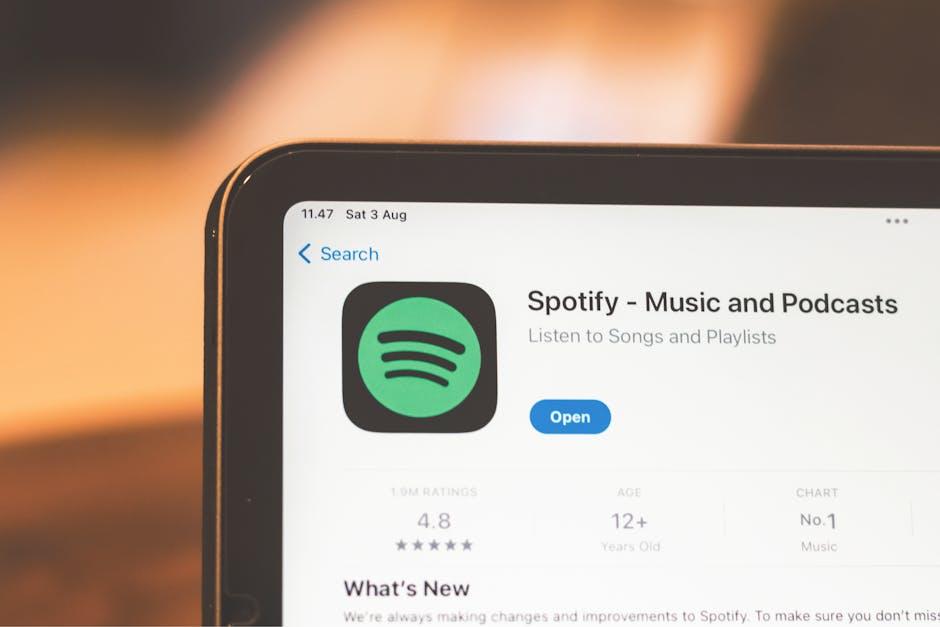In the rapidly evolving landscape of digital entertainment, streaming services have revolutionized how audiences consume content. From binge-watching series to discovering new films, platforms like Netflix, Amazon Prime, and Disney+ have become household staples. Yet, as these services continue to amass vast audiences, a critical question emerges: Are streaming platforms transparent about viewer data? While concerns about data privacy and usage persist, there is growing optimism that the industry is moving towards greater transparency. This article delves into the current state of data transparency in streaming services, exploring the strides made, the challenges that remain, and the potential for a future where viewers have clearer insights into how their viewing habits are tracked and utilized. As we navigate this digital frontier, understanding the balance between user privacy and data-driven innovation is more crucial than ever.
Understanding the Complexity of Viewer Data Collection
At the heart of streaming services lies a labyrinth of data collection mechanisms, intricately designed to capture every nuance of viewer interaction. While this may sound like an Orwellian surveillance system, the reality is that these platforms are leveraging data to enhance user experience and deliver personalized content. The complexity arises from the multifaceted nature of data types being collected, ranging from basic metrics like view counts to more sophisticated insights such as viewer engagement patterns and content preferences. Streaming platforms utilize a combination of algorithms and machine learning to sift through this sea of data, aiming to predict what you might want to watch next. This predictive modeling not only benefits users with tailored recommendations but also empowers content creators with insights into audience preferences.
However, the opacity of these data collection processes can sometimes lead to misconceptions about their purpose and application. Streaming services often employ a variety of tools to collect data, including:
- Cookies and tracking pixels to monitor user activity across different devices.
- User profiles and preferences to tailor content suggestions.
- Feedback loops that incorporate user ratings and reviews into content curation.
While the technical intricacies may seem daunting, the optimistic view is that the evolution of data collection is driven by the desire to offer a more engaging and relevant streaming experience. As transparency improves and users gain a better understanding of these processes, the relationship between streaming services and their audiences is poised to become more symbiotic.
Analyzing the Openness of Streaming Platforms
In the realm of digital entertainment, the transparency of streaming platforms concerning viewer data has become a focal point for both users and industry analysts. While platforms like Netflix, Amazon Prime, and Disney+ have revolutionized the way we consume content, their approach to data openness remains under scrutiny. These services often tout their recommendation algorithms as a benefit, yet the specifics of how they utilize and share viewer data can sometimes feel like a closely guarded secret.
To foster a more open relationship with their audience, streaming platforms could adopt several practices. Some potential steps include:
- Detailed Privacy Policies: Clear, easily accessible explanations of how viewer data is collected, stored, and used.
- Regular Transparency Reports: Periodic updates that outline data practices, including any changes or improvements made.
- User-Controlled Data Access: Providing users with the ability to view and manage their data directly from the platform interface.
By implementing such measures, streaming services can build trust and ensure that their vast troves of viewer data are managed responsibly and ethically.

Exploring the Impact of Data Transparency on Consumer Trust
In today’s digital age, the relationship between streaming services and their subscribers is heavily influenced by how these platforms handle viewer data. Consumers are increasingly aware of their digital footprints, and data transparency has become a crucial factor in building and maintaining trust. Many streaming giants are beginning to realize that by being transparent about their data practices, they can foster a more loyal customer base. This transparency not only involves disclosing what data is collected but also explaining how it’s used to enhance user experience. For instance, personalized recommendations, curated playlists, and tailored content suggestions all rely on data insights. However, when users are kept in the dark about how their data is utilized, it can lead to skepticism and mistrust.
- Clear Communication: Streaming services should clearly communicate their data policies, making them easily accessible and understandable.
- User Control: Providing users with control over their data, such as options to opt-out of certain data collection practices, can empower consumers.
- Value Exchange: By highlighting the benefits of data sharing, such as improved content recommendations, services can create a positive value exchange with their users.
Embracing data transparency is not just about compliance with regulations; it’s about building a relationship based on trust and respect. As streaming platforms continue to innovate and expand, those that prioritize transparency will likely see a significant boost in consumer confidence and loyalty.

Strategies for Enhancing Transparency in Viewer Data Practices
In the quest for greater transparency, streaming services can adopt several effective strategies to clarify their viewer data practices. First and foremost, they should implement clear and concise privacy policies. These documents should be easily accessible and written in straightforward language, eliminating technical jargon that might confuse users. By offering summaries or visual aids, such as infographics, companies can further enhance understanding and trust.
Moreover, streaming platforms can engage in proactive communication with their audience. This involves regularly updating users about any changes in data collection practices and providing options for users to easily manage their data preferences. Hosting webinars or Q&A sessions can also help demystify data practices. Additionally, adopting third-party audits and sharing the results with the public can serve as a testament to the company’s commitment to transparency, providing users with an external validation of their data handling processes.







































